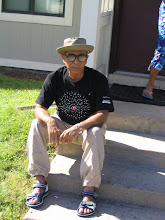In the mind’s eye frames move backward. A serpentine coloured streak, mostly red and green , is moving forward along the earthy brown bridle path between the dense and dazzlingly green tea bushes over the undulating low hillocks of Surma valley tea gardens of Cachar area in India, Sylhet and Chittagong of present day Bangladesh. Tea garden labourers , mostly women were going to join the Durga Puja. Their own complexion, predominantly glistening ebony black among all the surrounding colours with their own defiantly bright red saris under a magical cloudless blue sky left me with a loner’s happiness which a loner can only enjoy. In fact, my first conscious feeling of a Durga Puja was gathered from the tea garden Durga Pujas. Almost all tea gardens had English managers and under managers In the matter relating to Durga Puja they stretched their generosity to the farthest limit. Every garden used to have community Natch Ghar (dance hall). That was the main venue of the puja.
This colourful procession I was watching from a slow moving train’s window while on way to visiting a friend in a tea garden. This friend was in the Royal Indian Navy in the British days, an accused in the naval mutiny and demobilized after the Second World War, one among the seven million made unemployed at that time. He had a sprawling ancestral property on the fringe of a famous tea estate. He dabbled in what was called progressive political activity. He was supposed to help me in my feeble attempt at trade union activity among the garden labourers in the dangerous days of Pakistani regime. He asked me to stay with him during the pujas. And that once a
gain threw me back into the folds of my childhood tea garden pujas. The colour, illumination by incandescent lights, sound of many hundred voices of men, women and children, absence of microphone and loud speakers , swirling dust of red earth, performance of plays ,mostly mythological by itinerant jatra parties of local origin on four side open stage. The actors had to have enormous lung power and ability to gesticulate powerfully to captivate the thousand strong audience throughout the night. And the overwhelming smell of biris, combined with that of sweets fried and made syrupy in oil and sugar of dubious quality. A painter could be very happy with all this.This colourful procession I was watching from a slow moving train’s window while on way to visiting a friend in a tea garden. This friend was in the Royal Indian Navy in the British days, an accused in the naval mutiny and demobilized after the Second World War, one among the seven million made unemployed at that time. He had a sprawling ancestral property on the fringe of a famous tea estate. He dabbled in what was called progressive political activity. He was supposed to help me in my feeble attempt at trade union activity among the garden labourers in the dangerous days of Pakistani regime. He asked me to stay with him during the pujas. And that once a
The only jarring note was struck by my former seaman friend with his weakness for ganja and bhang, the potent resinous extraction of different grades from cannabis you smoke or mix with sweetened milk and drink.
 But all the same childhood returned for a couple of days. We would throng around in our not so clean half shirts, shorts, frocks in the wealthy neighbor’s house and watched with intense curiosity and surprise how the kumars (sculptors) were building images of Durga and her cohorts. First, split bamboo pieces tied together with hay fastened over, then plastering with adhesive black clay brought specially from river bed which had to be kneaded with finely cut jute for more cohesion, We, all Apus and Durgas of the locality watched how carefully and truthfully the sculptors tried to shape the female and male anatomy of the Gods and Goddesses .Then with paints how a piece of hessian sheet soaked in clay turned in to a beautiful sari with borders of wonderful flower pattern. In our contemporary innocence we earnestly believed in miracles and divine deliverance.
But all the same childhood returned for a couple of days. We would throng around in our not so clean half shirts, shorts, frocks in the wealthy neighbor’s house and watched with intense curiosity and surprise how the kumars (sculptors) were building images of Durga and her cohorts. First, split bamboo pieces tied together with hay fastened over, then plastering with adhesive black clay brought specially from river bed which had to be kneaded with finely cut jute for more cohesion, We, all Apus and Durgas of the locality watched how carefully and truthfully the sculptors tried to shape the female and male anatomy of the Gods and Goddesses .Then with paints how a piece of hessian sheet soaked in clay turned in to a beautiful sari with borders of wonderful flower pattern. In our contemporary innocence we earnestly believed in miracles and divine deliverance.This innocence was only relative. Every age has its own variety of childish innocence. When we also grew up later under the shadow of newly acquired arrogance of skepticism, argumentativeness and disbelief this turned into a ridiculous nothing. But that smell of shefali, view of white kash on the banks of mirror-calm rivers under an azure blue sky with drum beats around and the image of gorgeous goddess Durga always lead back to a wonderful feeling of happiness.
Image courtesy Internet: Apu and Durga, still from "Pather Panchali", a film by Satyajit Ray






